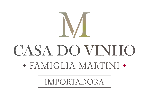
Château CamplazensRémus
In the mouth this red wine is a powerful with a nice balance between acidity and tannins.
This wine generally goes well with beef, veal or pasta.
Taste structure of the Rémus from the Château Camplazens
Light | Bold | |
Smooth | Tannic | |
Dry | Sweet | |
Soft | Acidic |
In the mouth the Rémus of Château Camplazens in the region of Languedoc-Roussillon is a powerful with a nice balance between acidity and tannins.
Food and wine pairings with Rémus
Pairings that work perfectly with Rémus
Original food and wine pairings with Rémus
The Rémus of Château Camplazens matches generally quite well with dishes of beef, pasta or veal such as recipes of fondue bourguignonne and accompanying sauces, quiche with mixed vegetables or braised veal heart with carrots.
Details and technical informations about Château Camplazens's Rémus.
Discover the grape variety: Centennial seedless
Cross between gold and Q25-6 (F2 emperor x Pirovano 75 or sultana moscata) obtained in the United States in 1966 by Professor Harold P. Olmo of the University of Davis (California). At the end of 2005, Centennial seedless was registered in the Official Catalogue of table grape varieties, list A1.
Informations about the Château Camplazens
The Château Camplazens is one of of the world's great estates. It offers 23 wines for sale in the of Languedoc to come and discover on site or to buy online.
The wine region of Languedoc
Languedoc (formerly Coteaux du Languedoc) is a key appellation used in the Languedoc-Roussillon wine region of southern France. It covers Dry table wines of all three colors (red, white and rosé) from the entire region, but leaves Sweet and Sparkling wines to other more specialized appellations. About 75% of all Languedoc wines are red, with the remaining 25% split roughly down the middle between whites and rosés. The appellation covers most of the Languedoc region and almost a third of all the vineyards in France.
The wine region of Languedoc-Roussillon
Languedoc (formerly Coteaux du Languedoc) is a key appellation used in the Languedoc-Roussillon wine region of southern France. It covers Dry table wines of all three colors (red, white and rosé) from the entire region, but leaves Sweet and Sparkling wines to other more specialized appellations. About 75% of all Languedoc wines are red, with the remaining 25% split roughly down the middle between whites and rosés. The appellation covers most of the Languedoc region and almost a third of all the vineyards in France.
The word of the wine: Vent (taste of)
A defect that characterizes a wine exposed to the air, and which has lost its aromatic qualities.














